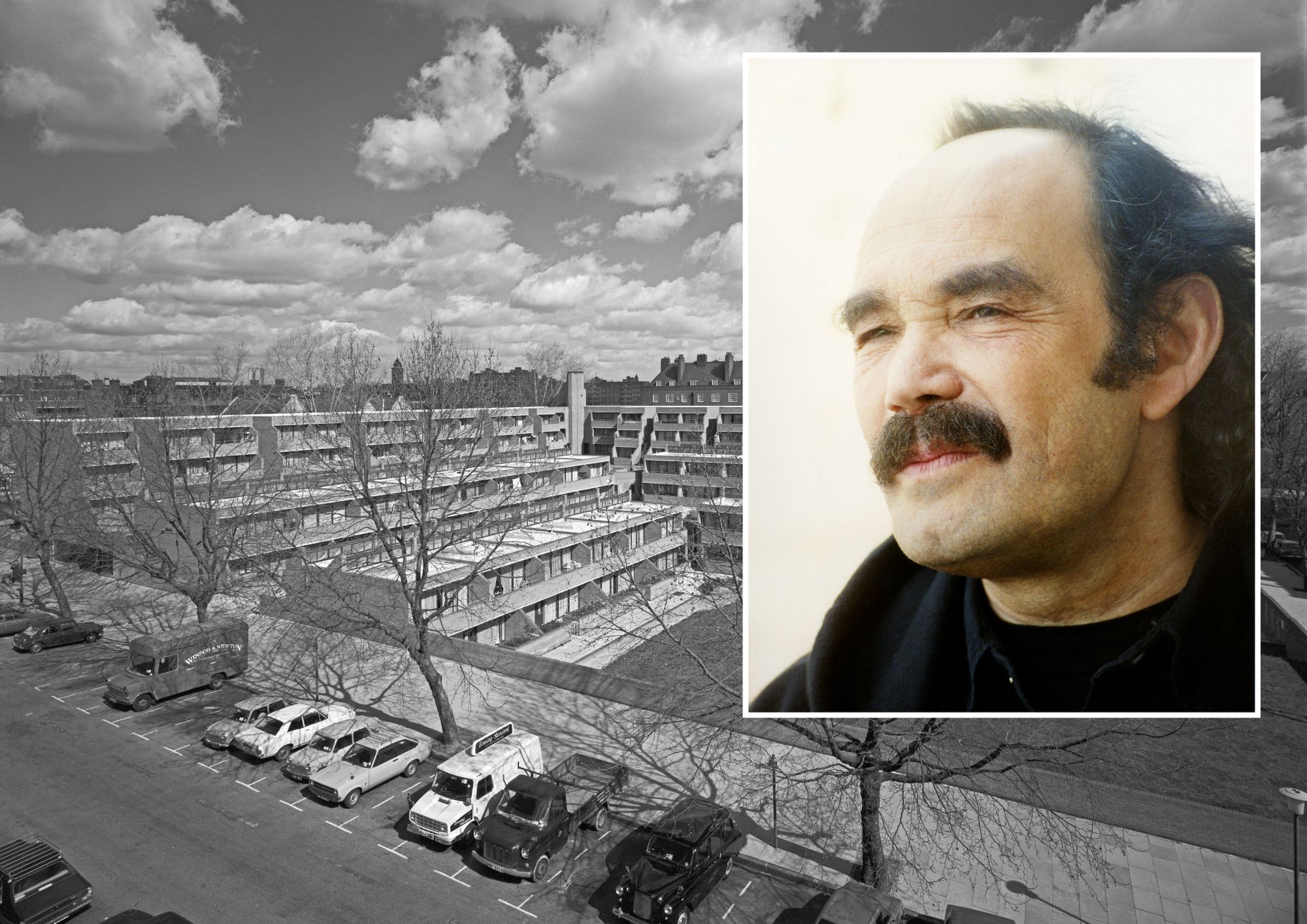Peter Tábori, homes architect changed people’s lives
His studies include working for Erno Goldfinger, who considered him a protégé
Tuesday, 4th April 2023 — By Dan Carrier

Peter Tábori and the Polygon Road development
ARCHITECT Peter Tábori built estates that have provided a safe and happy home for many.
Working for Camden Council during the heyday of social housing, Peter’s projects include Stoneleigh Terrace, Highgate Newtown and Oakeshott Court in Somers Town.
Peter, who has died aged 83, lived through tumultuous times as a young man. Born in Budapest in 1940, his home city was under occupation by the Nazis.
His father Stephen was Jewish, but survived with the protection of his wife, Erszabet Szanto, a world renowned opera singer. It kept them safe until the Red Army came and stayed for the next 50 years.
Peter’s world was turned upside in 1956.
The Hungarian Revolution against the Soviet system kicked off and aged 16 he bore witness to tanks rolling in.
Peter was injured in street fighting. Soldiers scoured hospitals for rebels and still wounded, Peter was taken to an internment camp and spent a miserable winter with the threat of being sent to a Gulag hanging over him.
In the Spring of 1957, Peter was selected to be an example to the western media of how the USSR camps were well managed place.
This sham performance lead to his release.
He returned to Budapest to discover his family believed he had been killed and had fled to London.
Peter smuggled himself across borders on foot. He reached London and was given refugee status. He enrolled at the Regent Street Polytechnic to study architecture.
His studies include working for Erno Goldfinger, who considered him a protégé and liked him so much he tried to arrange a marriage to his daughter.
He also sent Peter to northern Italy to study the Renaissance. It would influence his work, and friends were treated to a home-made Christmas card featuring one of the drawings Peter had made on his first trip to Tuscany.
At the Poly, he was taught by Richard Rogers and Norman Foster.
As part of his thesis, Peter looked at sites earmarked for development. One was Highgate Newtown. Borough architect Sydney Cook head-hunted Peter, then in his 20s.
He joined in 1969 and completed the project and spent 20 years working for Camden.
Peter saw issues rising from the post-war social housing boom. Open to new ideas, he believed retaining buildings instead of demolition if possible. Visits to Tuscany showed towns with people living in close proximity and homes where you step in to the street.
Living in Gayton Road, Hampstead, he later took on private work, which took him across Europe. In the 1960s, he met his first wife Angelika, and they had three children.
In the 1980s, after the couple had separated, he met Anne Saville, with whom he had a son in 1984. After that relationship ended, he struck a long-term relationship with Jenny Rabeneck.
He would later move to Daniel Lubetkin’s Highpoint flats in Highgate.
Described as “fantastically good looking”, Peter swam at the Oasis in Holborn. It was said the number of female swimmers would increase when he stripped. Myths developed poolside: it was said he was a Hungarian Prince.
Peter described himself as a social democrat or Green. He was a humanist, prompted by seeing first-hand how man can treat others.
Peter read widely, interested in tomes on the relationships between the individual and state.
He was a film buff, with Hitchcock a favourite.
He loved classical music and jazz, a regular at Ronnie Scott’s followed by a meal at the Hungarian bistro Gay Hussar in Greek Street. At home, he loved to cook slow stews, making Goulash over an eight hour period.
Peter was a sportsman. He earned two black belts, reaching Second Dan status, in Judo.
A truly modern Renaissance man, Peter’s talents have created some of the best loved examples of social housing in the UK and has left a long and bright impact on the borough where he made his home.